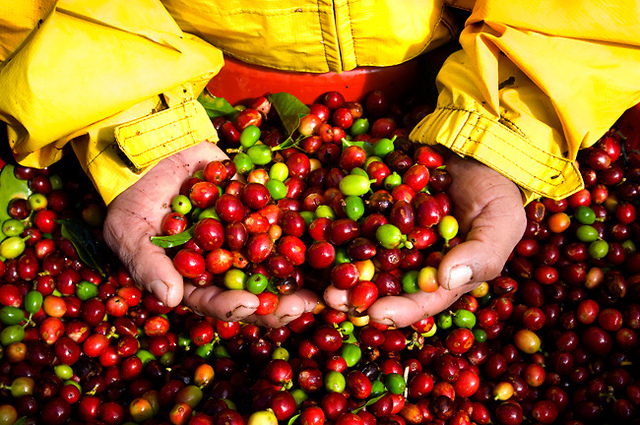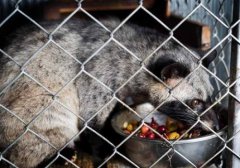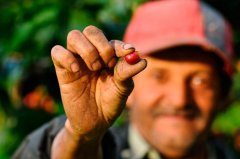Simple understanding of Coffee Certification: certified Coffee ≠ has a delicious aroma of fine coffee
For professional baristas, please follow the coffee workshop (Wechat official account cafe_style)
The sustainable development of coffee refers to the coffee that can make consumers feel at ease.
Care for coffee producers and production environment in order to continue to drink delicious coffee.

Coffee is the second largest traded commodity in the world after oil. When millions of people around the world enjoy a cup of mellow coffee on a good morning, if the coffee grows with environmentally friendly characteristics, including the use of only natural fertilizers on the manor, no synthetic fertilizers, herbicides, pesticides. It will be able to protect the habitats of many animals and birds at the same time, forming a natural and mutually beneficial symbiosis between animals and plants. When we taste these high-quality coffee, we can not only enjoy the delicacy of the coffee, but also contribute to the environment.
At present, non-governmental organizations (NGO) in Europe and the United States are also committed to promoting sustainable development of coffee, and provide technical guidance on production and marketing experience, protection of biodiversity of producing areas, protection of human rights of manor workers, and so on. Relevant criteria are also set and certification activities are carried out, and certificates will be issued by manors or farmers' associations as soon as they pass the standards.
Sustainable development coffee is divided into three parts: organic coffee (Organic Coffee), fair trade coffee (Fair trade Coffee) and certified coffee. Part of the sustainable development of coffee will ask the third fair unit to guarantee the relevant certification in order to maintain the credit of certified coffee.
Organic coffee certification:

(left) Organic Coffee Organization Certification (Certified Organic OCIA)
(middle) USDA US official Organic Certification (United States Department of Agriculture)
(right) JAS Japanese Standard for Organic Agricultural products (Japanese Agricultural Standard of Organic Agricultural Products)
Fair trade coffee certification:

Fair Trade Mark (The Fairtrade Marks)
Certified Coffee:

(left) friendly Bird Bird Friendly Certificate (right) Rainforest Alliance Rainforest Alliance, RA

(left) shade coffee Shade Grown Coffee (right) good coffee certification (UTZ Organic Shade Grown Coffee)
Certified coffee ≠ coffee with delicious aroma
The evaluation criteria of boutique coffee include the quality, aroma and sustainability of coffee. The biggest difference between it and commercial coffee is that it attaches great importance to the quality and aroma of coffee. The sustainable development of coffee represents its adoption of standards such as the environment of the place of origin and the life of farmers, but does not include the certification of coffee quality and aroma.
Boutique coffee must be "coffee with beautiful aroma", while sustainable coffee may not meet this standard. Because the production environment of coffee is stable, the price of coffee will be stable; in order to continue to produce coffee beans with stable prices and good quality, it is necessary to take the producers' living conditions and planting environment as the premise, and it has also become a major issue in the promotion of high-quality coffee.
Important Notice :
前街咖啡 FrontStreet Coffee has moved to new addredd:
FrontStreet Coffee Address: 315,Donghua East Road,GuangZhou
Tel:020 38364473
- Prev

What does Kopi Luwak taste like? understand the Kopi Luwak making process carefully.
Good mountains and good water make good coffee beans, Yunnan, China can also produce excellent Kopi Luwak. Give civets the best coffee beans, ripe ones. It is said that artificial captivity is inhumane, but if it is not artificially captive, how can it survive in today's environment? Artificial breeding of Kopi Luwak is a relatively safe method. (except for a few breeders that kill the goose that lays the golden eggs) Coffee beans with cat droppings in the shade
- Next

Colombia's unique Coffee Culture description of the meaning of Colombian Coffee logo
Colombia, located in the northwest of South America, is a beautiful country with a long history. Indians have lived on this land since ancient times. It was colonized by Spain in 1531 and gained independence in 1819. It was renamed in 1886 to commemorate Columbus, the discoverer of the American continent. In 1808, a priest transferred coffee from the French Antilles to Venezuela.
Related
- Detailed explanation of Jadeite planting Land in Panamanian Jadeite Manor introduction to the grading system of Jadeite competitive bidding, Red bid, Green bid and Rose Summer
- Story of Coffee planting in Brenka region of Costa Rica Stonehenge Manor anaerobic heavy honey treatment of flavor mouth
- What's on the barrel of Blue Mountain Coffee beans?
- Can American coffee also pull flowers? How to use hot American style to pull out a good-looking pattern?
- Can you make a cold extract with coffee beans? What is the right proportion for cold-extracted coffee formula?
- Indonesian PWN Gold Mandrine Coffee Origin Features Flavor How to Chong? Mandolin coffee is American.
- A brief introduction to the flavor characteristics of Brazilian yellow bourbon coffee beans
- What is the effect of different water quality on the flavor of cold-extracted coffee? What kind of water is best for brewing coffee?
- Why do you think of Rose Summer whenever you mention Panamanian coffee?
- Introduction to the characteristics of authentic blue mountain coffee bean producing areas? What is the CIB Coffee Authority in Jamaica?

